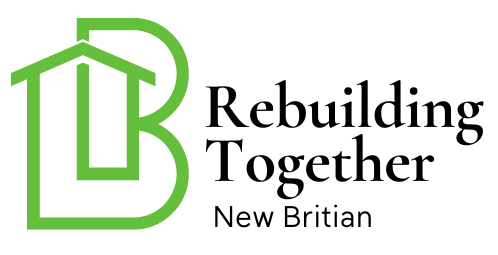The art of masonry has significantly contributed to the durability and elegance of buildings over centuries. One crucial aspect of masonry, often overlooked by homeowners yet fundamental to construction, is the collar joint. But what is a collar joint in masonry and why is it such a vital component? In this article, we will explore its meaning, applications, and importance, providing all the insights homeowners need to understand this critical element in construction.

Understanding the Basics of Collar Joints
A collar joint in masonry is the vertical space between two adjacent masonry walls. Typically, this space ranges from 25 to 50 mm and is filled with mortar, grout, or a combination of the two. This joint plays a pivotal role in providing structural integrity and maintaining stability in multi-wythe walls. Multi-wythe walls refer to masonry walls with multiple layers, a feature you often find in older buildings or structures requiring tremendous strength and insulation.
Depending on the construction requirements, the collar joint could be left open or filled with various materials. The decision to leave it open or filled depends largely on the structural design and the intended use of the building, making the role of a collar joint truly versatile in masonry.
The Tremendous Importance of Collar Joints in Masonry
The importance of understanding what is a collar joint in masonry cannot be understated. These joints serve a variety of purposes that homeowners must be aware of, including stabilization, thermal insulation, and moisture control. Below, let’s take a closer look at some of the primary reasons why collar joints are so crucial:
1. Structural Stability
A properly constructed collar joint increases the wall’s strength and stability. This is particularly important for areas prone to earthquakes or heavy winds, as the interior material acts as a buffer zone, enhancing the overall endurance of the masonry walls.
2. Excellent Thermal Insulation
The filling of the collar joint with insulating material provides tremendous thermal performance by preventing the loss of heat in the interiors of a building. This is a valuable feature in both residential and commercial masonry setups.
3. Moisture Resistance
Collar joints filled with mortar or grout reduce water seepage, preventing damage caused by moisture infiltration. This feature ensures that the structure remains durable over the years, lowering the need for frequent repairs.
For more details about how different materials in masonry can affect your home, visit masonry sand.
Materials Commonly Used for Collar Joints
Materials play a key role in the performance of collar joints. When asking what is a collar joint in masonry, the type of materials used cannot be ignored. Here are some of the most common materials found in collar joints:
1. Mortar
Mortar is a traditional material used in collar joints. Its adhesive properties help enhance the bond between bricks, ensuring structural longevity.
2. Grout
Grout, which is a mixture of cement, sand, and water, is commonly used when additional strength is required for the joint. Grouts excellent flowability makes it ideal for filling collar joints efficiently.
3. Insulating Materials
In colder climates, insulating materials are sometimes added to the collar joint to ensure thermal efficiency while maintaining structural soundness.
Common Applications of Collar Joints in Masonry
Collar joints find use in multiple types of masonry construction, each one dependent on the specific needs of a project. Below are some notable applications:
1. Load-Bearing Walls
Load-bearing walls often employ filled collar joints to improve load transfer and enhance structural resilience.
2. Partition Walls
Partition walls benefit from collar joints, especially when they are insulated, to create energy-efficient spaces for homeowners.
3. Fireproofing Walls
When collar joints are filled with specialized fireproofing materials, they serve as a barrier against the spread of fire.
Looking to improve your homes protected structural design? Check out masonry anchors.
Challenges in Constructing Collar Joints
While collar joints play an integral role in masonry, constructing them requires precision from skilled masons. Here are some challenges involved:
1. Alignment Issues
If the layers of masonry dont have proper alignment, it becomes difficult to construct uniform collar joints. This often compromises the walls stability.
2. Material Settlement
Incorrect filling of mortar or grout can lead to settlement issues, reducing the collar joint’s efficiency over time.
Learn more about construction considerations for homeowners, such as how to renovate stairs effectively for your home.
How Homeowners Can Benefit from Collar Joints
Understanding what is a collar joint in masonry can help homeowners better appreciate their role in the structural integrity, efficiency, and durability of their homes:
- Increase your home’s thermal efficiency.
- Ensure long-term stability and protection from natural elements.
- Minimize repair costs by addressing joint problems earlier.
FAQ
1. Why is a collar joint important in masonry?
A collar joint improves the structural strength, durability, and energy efficiency of multi-wythe masonry walls, making them critical for stable constructions.
2. Can homeowners inspect collar joints themselves?
While basic inspection can reveal visible issues, professional contractors are recommended to ensure more thorough and accurate evaluations. Use professionals like those found on this masonry directory.
3. What is the best filling material for collar joints?
The best filling material depends on the structural requirements, climatic conditions, and intended use of the building. Mortar and grout are common choices.
For more tips on optimizing your home’s interior, visit renovate living room.

Conclusion
Collar joints are an unsung hero in masonry, providing stability, insulation, and moisture resistance. Understanding what is a collar joint in masonry goes a long way in making informed decisions about your home. By ensuring proper construction and material usage for collar joints, you can shield your structure from wear and tear for years to come!
This article contains affiliate links. We may earn a commission at no extra cost to you.

